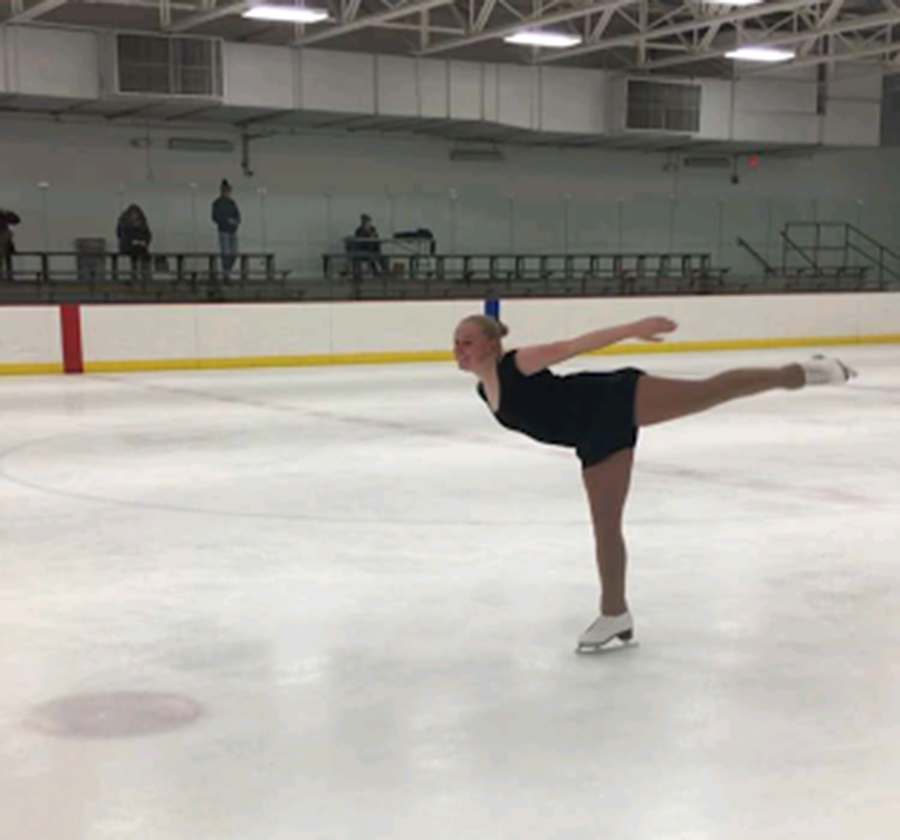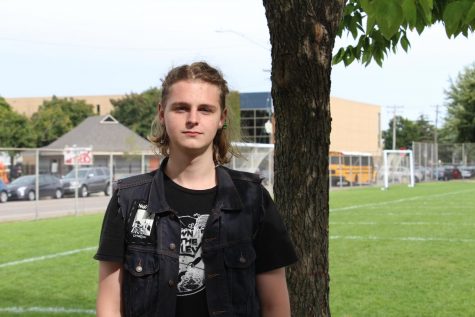Skating team glides into South as a club sport
Pictured above is senior Stephanie Krause skating during a practice at Parade Ice Garden. The team hasn’t had many practices, but once the group gains a few more members they hope to have them more often. Photo courtesy of Maren Stone.
February 1, 2018
Despite South having a variety of sports for people with different skills and interests, there remains a margin of sports that are not recognized by the school. In some cases, there are athletes who do not have an option to play for their school in their sport. This is why these South students have began to form clubs where they can practice their sport and compete for their school.
This fall, senior Stephanie Krause had the idea to create a figure skating team for people with experience on the ice. She and senior Maren Stone created the team, which is now being advised by Mrs. Lanik. The skaters have hopes of figure skating becoming a sport you can letter in at South.
“Me and Stephanie created it because we felt like there was not a team or club for our sport,” said Stone. “Figure skating is not a very popular sport, and we wanted to be able to letter in it. That was kind of the main reason [why we created the club], but we also just wanted to try to get other people interested in it.”
Stone and Krause got their idea from the other schools that offered figure skating as a sport. Eventually Krause and Stone talked to Mrs. Lanik about their idea, and Lanik agreed to supervise.
“I talked to Mrs. Lanik to begin with, because her daughter is a skater and I met her daughter before. And I knew we needed a teacher to be our adviser,” said Krause. “[Mrs. Lanik] told me to go to the athletic director and [have] someone to talk about the club. I thought, ‘I should just start it and make it open to the school so anyone can join.’”
The main focus of the team is to make the sport letterable. They also have ambitions of doing routines in between periods at Minneapolis Hockey games. This would not only give them an opportunity to perform the product of all their hard work, but would also serve as a way to spread awareness about their club’s existence and hopefully recruit new members.
“[People] should join if they are interested in earning a letter, in doing a routine, or finding out about other skaters in the building and supporting each other,” said Lanik. “A lot of skaters don’t know [each other] if they don’t skate at the same rink or if there are any other skaters in the building.”
“[Skating] is what I spend all my time doing. If I am not at school, doing homework, or hanging out with friends, I am skating,” said Krause.
“And if I spend all my time doing it, that is just a lot of time put in where I do not really get any recognition. My only letters right now are academics and band, and people do not really know that I actually am in a sport. Lettering is a big deal for me so people can see my [letterman’s] jacket and think ‘athlete’ and not ‘nerd.”
Currently the team consists of three people. Krause, Stone, and Irene Mentatsi. The team meets weekly, every Monday. The team is hoping to recruit experienced skaters.
“Right now we’re just beginning to form. It’s a group of people who skate. It’s not for people who can’t ice skate, we’re not here teaching people how to skate,” said Lanik. “It’s for people who are already skaters, who want a community at South.”
Because the club runs without a official figure skating teacher, it’s easier if the club just draws skaters that have an existing background in the sport. Although this decreases the potential amount of skaters the team could have, it would be difficult to teach non-experienced players how to skate.
Community also plays a big part in this process. Community serves as a way for people to form meaningful relationships with and meet through extracurriculars. Whether community is found through sports, academic clubs, theatre, or more.
Regardless of what sport or activity one is involved in, the ability to create clubs is a great way to provide members of a less common activity with validation and the ability to represent their school. It yields recognition and their ability to compete in competitions.






